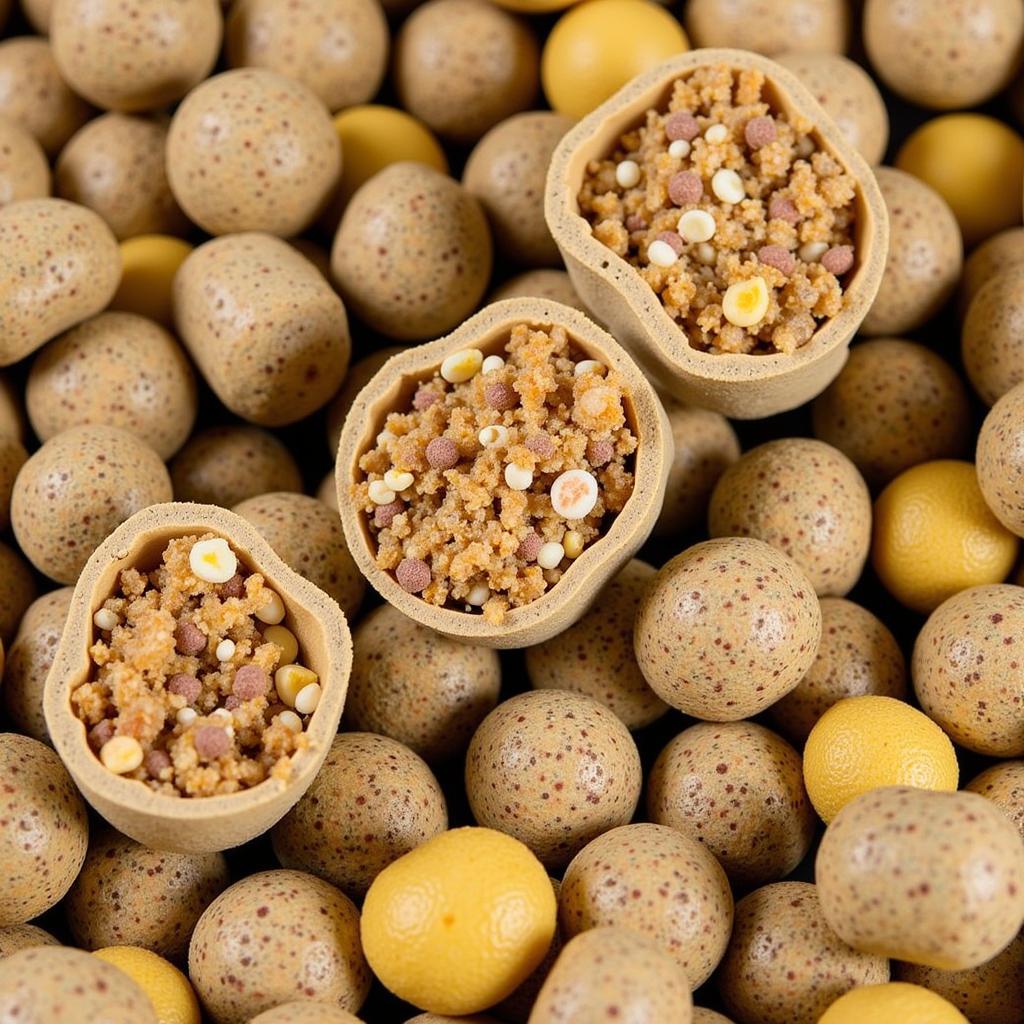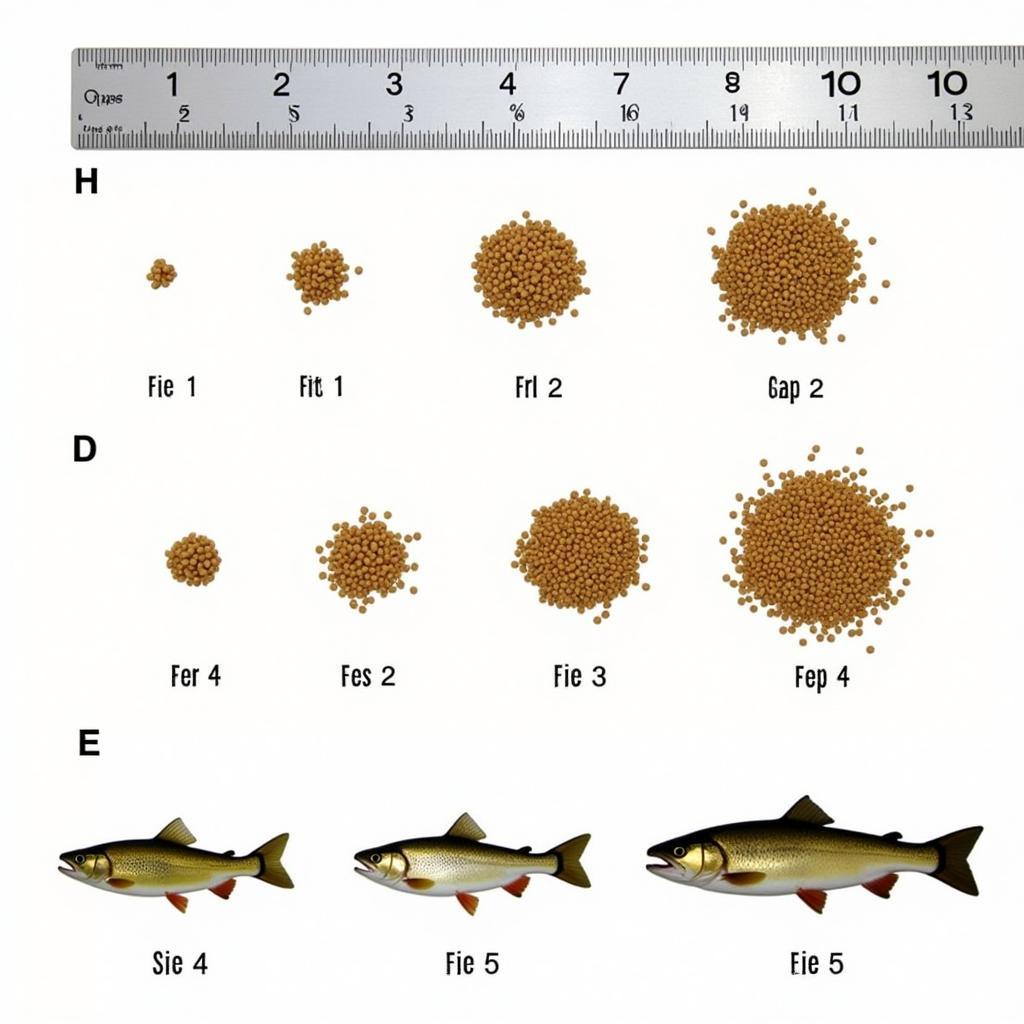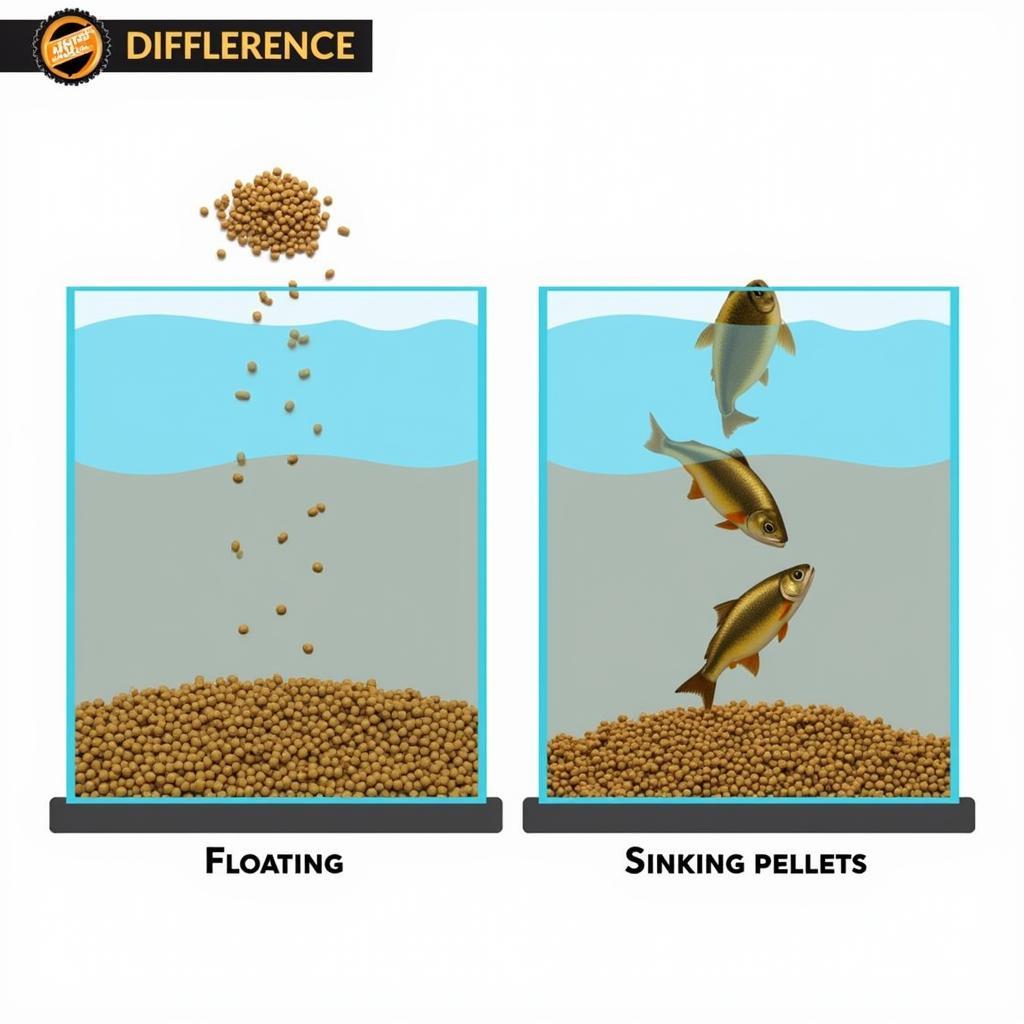Trout Food Pellets are a staple diet for many farmed and pet trout. Choosing the right pellet can significantly impact the health, growth, and vibrancy of your trout. This comprehensive guide will delve into everything you need to know about trout food pellets, from understanding their composition to selecting the best type for your specific needs.
Understanding Trout Food Pellets: A Deep Dive
Trout, being carnivorous, require a diet rich in protein. Trout food pellets are scientifically formulated to provide this essential nutrient, along with other vital vitamins and minerals. These pellets offer a convenient, balanced, and cost-effective way to ensure your trout receive the nutrition they need to thrive. They come in various sizes, shapes, and formulations, catering to different life stages and species of trout. Knowing what to look for can be the difference between a thriving trout population and one that struggles.
Decoding the Ingredients: What’s Inside Trout Food Pellets?
A key aspect of choosing the right trout food pellet lies in understanding its composition. High-quality pellets typically contain a blend of fishmeal, fish oil, grains, plant proteins, vitamins, and minerals. The protein source is crucial, as it provides the building blocks for muscle growth and overall health. Look for pellets with fishmeal as the primary protein source, as it closely mimics the trout’s natural diet.
Fish oil provides essential fatty acids, crucial for maintaining healthy skin, fins, and immune function. Other ingredients, such as grains and plant proteins, contribute carbohydrates for energy. Vitamins and minerals ensure optimal metabolic function and overall well-being.
 Close-up view of trout food pellets showcasing various ingredients
Close-up view of trout food pellets showcasing various ingredients
Choosing the Right Pellet Size: Matching Your Trout’s Needs
Pellet size is a critical consideration, as it directly impacts feeding efficiency and nutrient absorption. Smaller trout require smaller pellets, while larger trout can handle larger sizes. Using the incorrect pellet size can lead to wastage, as smaller trout may struggle to consume large pellets, and larger trout may not feel satiated with tiny pellets. Many manufacturers offer a range of pellet sizes tailored to different trout sizes and life stages, from fry to mature adults.
 Comparing different sizes of trout food pellets
Comparing different sizes of trout food pellets
Optimizing Trout Health with the Right Pellets
Selecting the right trout food pellets isn’t just about providing sustenance; it’s about optimizing their health, growth, and vibrancy. A well-nourished trout exhibits vibrant coloration, active behavior, and robust growth.
Boosting Growth and Coloration: The Power of Specialized Pellets
Specialized pellets are formulated to enhance specific aspects of trout health, such as growth rate and coloration. Growth pellets typically contain higher protein levels to promote rapid muscle development. Color-enhancing pellets incorporate pigments like carotenoids to intensify the natural colors of the trout, making them more visually appealing.
“Choosing a high-quality pellet is an investment in the long-term health and vibrancy of your trout,” says Dr. Emily Carter, a leading aquatic veterinarian. “The right nutrition can significantly impact their growth, coloration, and overall well-being.”
Floating vs. Sinking Pellets: Which is Best for Your Setup?
Trout food pellets come in two main forms: floating and sinking. Floating pellets remain on the water’s surface, allowing you to easily monitor feeding activity and ensure all trout have access to food. Sinking pellets, on the other hand, sink to the bottom, catering to bottom-feeding trout species. The choice between floating and sinking pellets depends on the specific species of trout you’re raising and your tank or pond setup.
 Comparison of floating and sinking trout food pellets in a tank
Comparison of floating and sinking trout food pellets in a tank
“Understanding the feeding habits of your trout is crucial for selecting the appropriate pellet type,” adds Dr. Carter. “Observing their behavior can help you determine whether floating or sinking pellets are more suitable for their needs.”
Conclusion: Nourishing Your Trout for Optimal Health
Choosing the right trout food pellets is a fundamental aspect of trout care. By understanding the key factors discussed in this guide, from ingredient composition to pellet size and type, you can make informed decisions that contribute to the health, growth, and vibrancy of your trout. Investing in high-quality trout food pellets is an investment in the long-term well-being of your aquatic companions.
FAQ
- How often should I feed my trout?
- What is the ideal water temperature for feeding trout?
- Can I supplement trout food pellets with other foods?
- How do I store trout food pellets properly?
- What are the signs of a nutritional deficiency in trout?
- Can I use the same pellets for different trout species?
- How do I transition my trout to a new type of pellet?
Need more help? Contact us! Phone: 02437655121, Email: minacones@gmail.com Or visit us at: 3PGH+8R9, ĐT70A, thôn Trung, Bắc Từ Liêm, Hà Nội, Việt Nam. We have a 24/7 customer service team.